Michelangelo Buonarroti, Frida Kahlo, Leonardo da Vinci, Claude Monet, and Pablo Picasso stand as monumental figures in the art world. Each brought forward a distinct vision that transcended their time and continues to influence the fabric of modern art.
Through their works, we witness a confluence of personal narrative, cultural context, and innovative techniques that collectively chart the course of artistic evolution. This journey through their lives and creations offers a lens into how personal experiences and societal dynamics can shape artistic expression, leaving an indelible mark on history.
Table of Contents
- The Alchemy of Michelangelo
- Frida Kahlo: A Portrait of Pain and Passion
- The Enigmatic World of Leonardo da Vinci
- The Revolutionary Impressionism of Claude Monet
- The Abstract Dimensions of Pablo Picasso
- Related Questions
The Alchemy of Michelangelo
Michelangelo Buonarroti’s masterpieces, from the imposing David to the celestial expanse of the Sistine Chapel’s ceiling, embody a blend of technical prowess and emotional intensity.
These works were not born in a vacuum. His struggles, enveloping everything from fraught relationships and spiritual yearnings to the turbulent politics of his day, are etched into the very marble and fresco of his creations.

Let’s quickly journey through his life to understand this connection. Michelangelo often found himself at odds with patrons and peers in his relationships. The demanding nature of his work for figures such as Pope Julius II created a stew of conflict and contention, fueling the intense expressions in his sculptures and paintings.
Each chisel mark on David seems to carry the weight of his professional conflicts, transforming the stone into a palpable symbol of human resilience and divine perfection.
Michelangelo’s profound religious beliefs further colored his artworks. Take the Sistine Chapel; it’s like observing a man’s struggle to align his earthly craft with his aspirations for divine connection.
The figures depicted are not just biblical characters; they are manifestations of Michelangelo’s spiritual tumult, draped in the beauty of human form yet reaching for something beyond the physical realm. His depiction of the Last Judgment, charged with dynamic tension and complex emotions, mirrors his contemplations on salvation and divine justice.
The socio-political chaos of Renaissance Italy also played a role. In a time when artists were often caught between warring factions and fluctuating fortunes, Michelangelo’s work stood as a bulwark against the uncertainty enveloping him. Moses’s defiance and the Madonna’s serenity in the Pietà reflect a response to the instability and strife that marked his existence.

In crafting the statue of David, Michelangelo sought to surpass ancient Greek and Roman art and to convey Florence’s republican virtues—strength, youth, beauty—against the backdrop of continuous wars and the Medici’s exile. David becomes more than a biblical hero; he embodies the collective spirit of Florence in its resistance against larger foes.
The meditative pose of his Captives or Slaves series speaks volumes about Michelangelo’s contemplation on the human condition trapped in stone, yearning for liberation—an echo of his quest for artistic and existential freedom amidst external pressures and internal conflicts.
Michelangelo’s work transcends mere artistic achievement; it is a window into a man’s soul wrestling with the divine and the mundane, finding beauty amidst the turmoil, and channeling personal travail into creations that continue to move humanity centuries later. Through chisel and paint, he explored the depths of human struggle, aspiration, and the eternal quest for beauty, leaving behind a legacy that remains unparalleled in its emotional profundity and technical mastery.
Frida Kahlo: A Portrait of Pain and Passion
Like Michelangelo, Frida Kahlo poured her tragedies directly onto her canvas—but with a distinctly modern, introspective twist that highlights not just the physical but also the emotional landscape of her tumultuous life.
After surviving a horrific bus accident at the age of 18, Kahlo’s body was left fractured and in constant pain, a theme that recurs in her vivid, often startling self-portraits. With each brushstroke, she offers viewers a glimpse of her resilience in the face of chronic physical suffering, with her artworks serving as a visual diary of her perseverance.

Kahlo’s marriage to Diego Rivera, a renowned Mexican muralist, offered another wellspring of inspiration and agony. The couple’s relationship was famously volatile, marked by mutual infidelities and dramatic separations. Yet, in this fiery dynamic, Kahlo found a raw emotional palette to draw from, capturing the highs and lows of their love and betrayals.
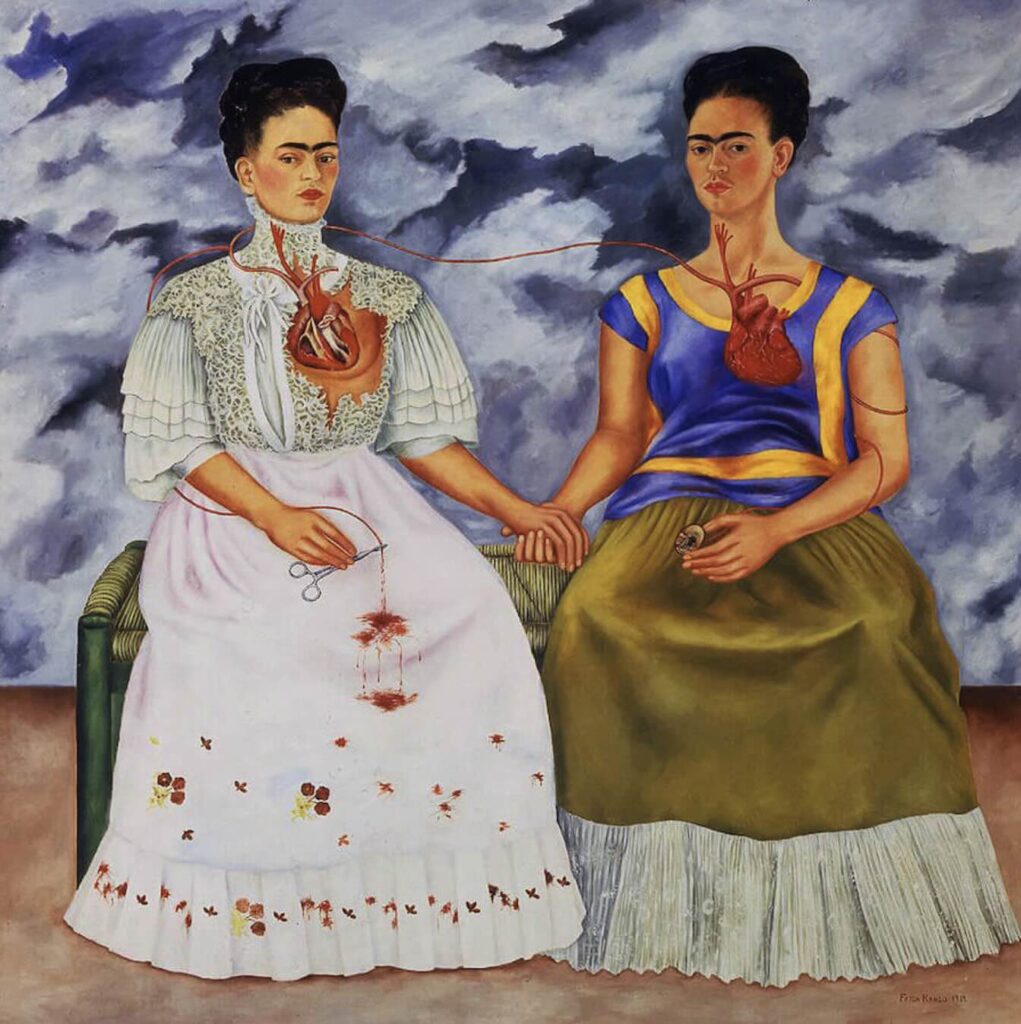
Her piece “The Two Fridas” poignantly depicts this duality, showcasing two versions of herself sitting side by side – one in traditional Mexican attire signifying the Frida loved by Rivera, and the other in a white European dress, representing the Frida who exists beyond him. This self-portrait highlights Kahlo’s struggle with her identity and the despair of unrequited love, revealing how her personal life deeply affected her art.
Beyond physical ailments and romantic turbulence, Kahlo’s exploration of her Mexican heritage and politics poignantly colors her work. Her pieces boldly embrace elements of Mexican folk art and symbolism, intertwining them with surrealistic imagery that reflects her inner turmoil and political beliefs.
Kahlo’s fierce pride in her culture and her involvement in the Mexican Communist Party are prominently woven into the fabric of her paintings, showcasing her advocacy for Indigenous culture and workers’ rights against a backdrop of personal and bodily revolution.
While Kahlo’s self-portraits dominantly feature her pain and contemplation, they are equally a celebration of survival. One can’t overlook the symbolic representation of pain alongside fertility and life in works such as “Henry Ford Hospital” and “The Broken Column.” These pieces lay bare her struggles with infertility and debilitating injuries, yet they stand as testaments to enduring life’s adversities.
Interconnecting themes of identity, politics, and physicality in Kahlo’s art also reflect an uncanny ability to symbolize universal human experiences. Through her intimate revelations, captured amidst vibrant landscapes and haunting imagery, Kahlo invites viewers into a deeply personal conversation about the bounds of body and spirit, making her art as much a portrait of universal struggle and resilience as it is of her singular existence.
Franz Kafka once said, “Art is a lie that makes us realize the truth.” Kahlo’s canvases resonate with this sentiment, as she transformed her afflictions into profound expressions of the human condition.
Her embrace of life’s complexity, capturing its beauty and pain with equal honesty, enhances the depth of understanding and connection with those who encounter her work. Frida Kahlo’s art is a testament to how personal tragedies influenced and catalyzed the creation of work that inspires empathy and introspection across generations.
The Enigmatic World of Leonardo da Vinci
Leonardo da Vinci’s scientific explorations naturally poured into and enhanced his artistic output like a river contributing to the vast sea. A detailed peek into the Vitruvian Man reveals Leonardo’s keen interest in the proportions of the human body, significantly informing his approach to human figures in painting and sculpture.
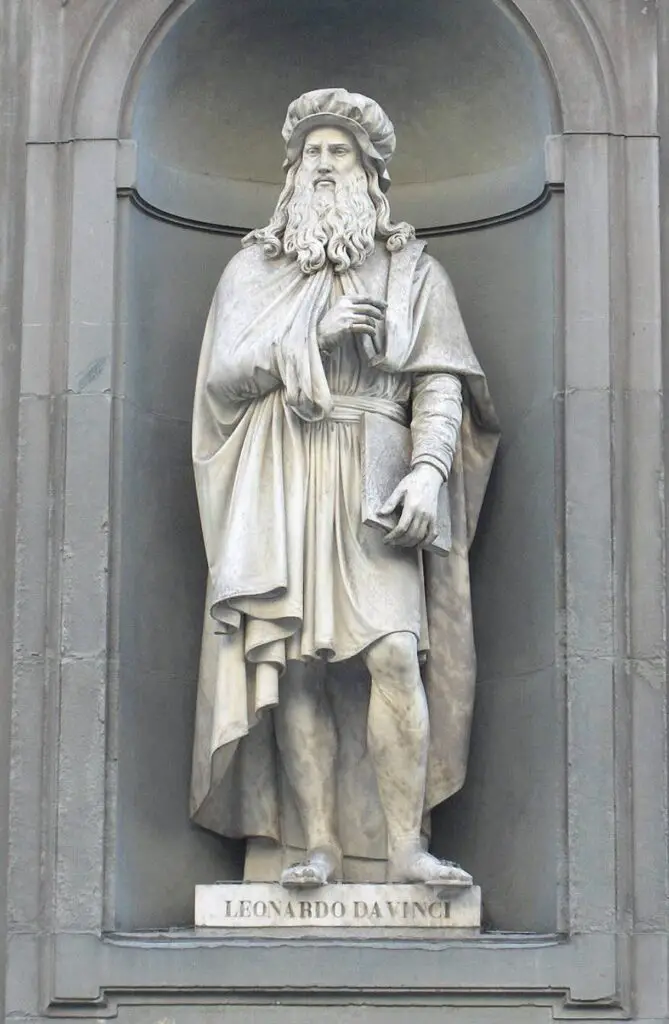
This wasn’t merely academic intrigue; Leonardo’s overarching aim was to uncover and reflect the geometric harmony ordained by nature in his art. Here, art and science didn’t merely coexist; they dialogued, each pushing the boundaries of the other.
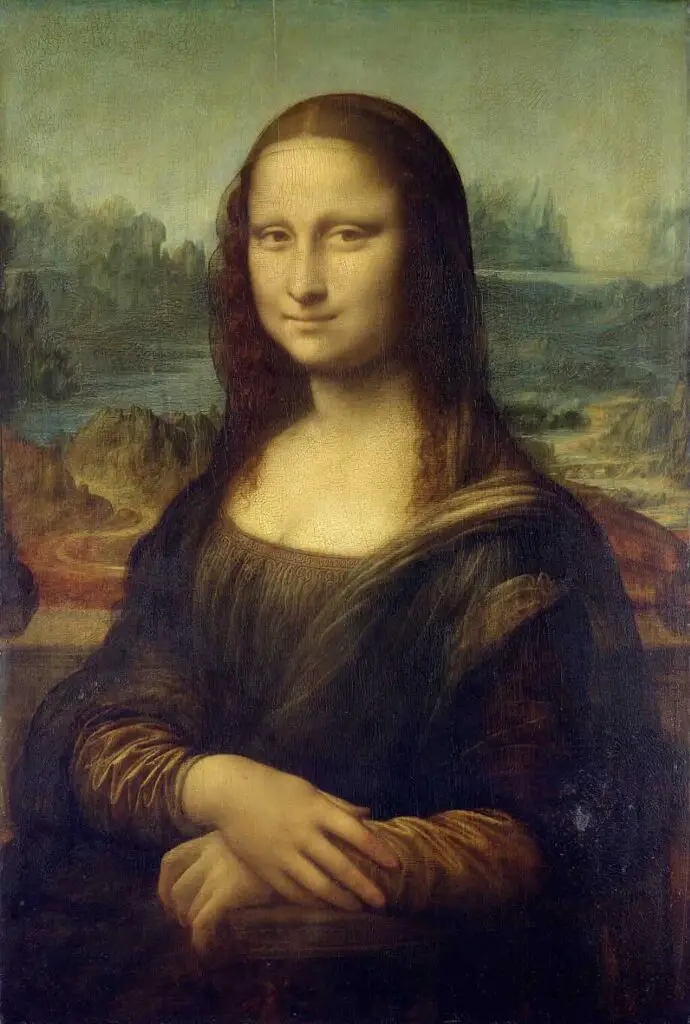
The mysterious smile of the Mona Lisa, a puzzle that has intrigued viewers for centuries, underscores another facet of Leonardo’s scientific disposition: his exploration of human anatomy.
The detail with which he studied muscles responsible for facial expressions shines through the nuanced smile of Mona Lisa, demonstrating his belief that inner emotions subtly alter one’s exterior. This masterpiece is a testament to how Leonardo’s relentless dissection of cadavers, a pursuit not for the faint-hearted, enriched his portraiture with unparalleled realism.
Leonardo’s notebooks, a chaotic yet brilliant mélange of art and science, demonstrate his fascination with the mechanics of nature. His investigations into how birds fly inspired numerous sketches, some conceptualizing human flight years before such dreams could materialize. These studies on aerodynamics might not have seen practical application in his lifetime. Still, they epitomize how his understanding of wind currents and air properties breathed life into the capes and gowns flowing gracefully in his paintings.
Beyond anatomy and aerodynamics, Leonardo’s understanding of light and shadow (chiaroscuro) redefined the scope of depth and realism in Western art. His sketches depicting light falling upon different shapes helped him create compositions where the light wasn’t merely an illuminator but a narrator, subtly codifying the passage of time, weather, and even the mental states of his subjects.
The Last Supper, another jewel in Leonardo’s crown, exemplifies how his experiments with perspective and spatial arrangements created an emotionally engaging narrative, placing viewers right into the narrative alongside Jesus and his disciples. Leonardo understood that scientific principles could unlock new ways of storytelling within the canvas, guiding the viewer’s eye and evoking a visceral response through composition and perspective.
Leonardo da Vinci’s artistic genius was not an isolated phenomenon but the fruit of a harmonious marriage between art and science. His scientific pursuits were never just about gathering knowledge for the sake of it; they were pathways to elevate his art, making him a true polymath whose works continue to fascinate and inspire. Through Leonardo’s eyes, we learn that art is not about what one sees on the surface but about the invisible connections and truths it reveals about the world around us.
The Revolutionary Impressionism of Claude Monet
Claude Monet, a pivotal figure in the Impressionism movement, broke free from the traditional studio painting methods by embracing the outdoors (en plein air) to seize the momentary atmosphere and effects of light on the landscape.
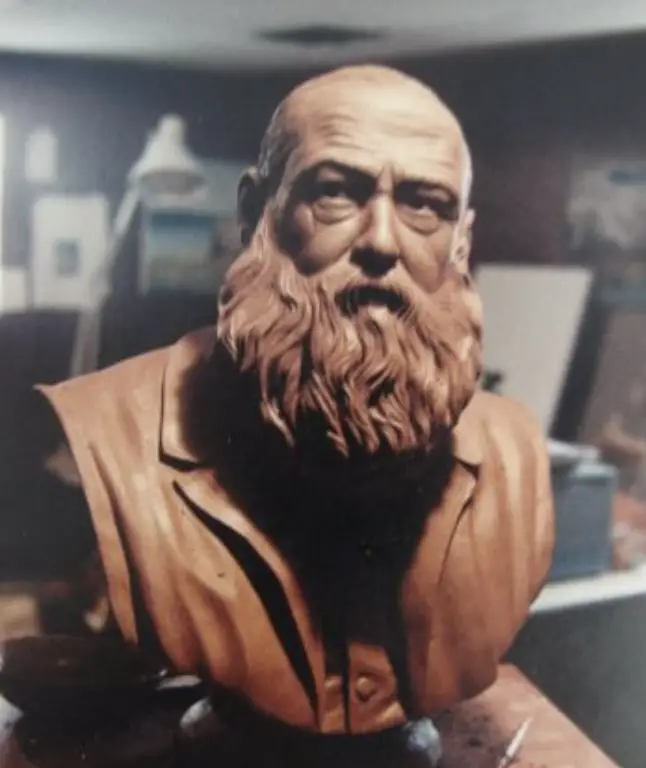
This revolutionary practice insisted that artists could capture moments with immediacy and movement. Monet’s ‘Impression, Sunrise,’ the artwork credited with naming the Impressionist movement, showcases his ability to portray a fleeting moment with a blend of colors rather than relying on detailed forms. This approach was considered radical at the time but effectively conveyed the temporary qualities of light on water, making the painting feel alive.
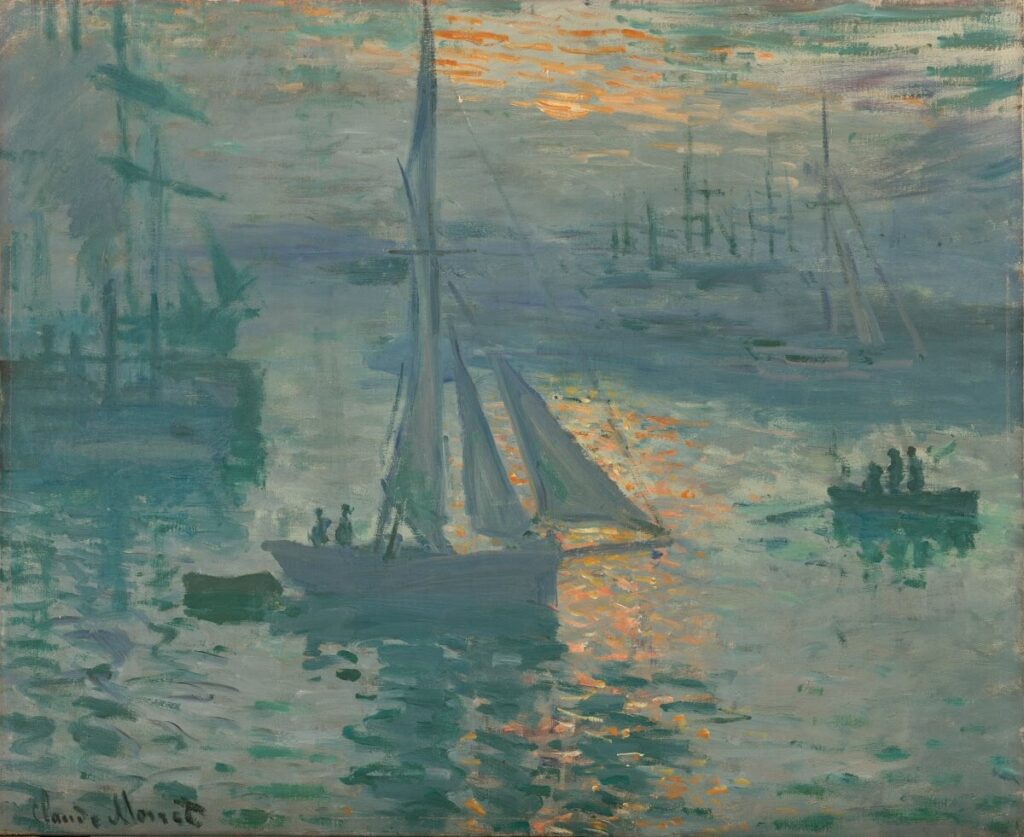
Monet’s devotion to capturing the ever-changing qualities of natural light led him to produce a series of paintings of the same subject under different light conditions and at various times of the day. His Water Lilies series, painted in his garden in Giverny, is a testament to this commitment.
Over over two decades, Monet painted the lilies in over 250 paintings, exploring subtle shifts in light, reflection, and color in an almost abstract manner. This endeavor demonstrated his tireless observational skills and advanced the technique of capturing the transient effects of light and atmosphere, which are central to Impressionism.
Monet painted the same subject repeatedly and profoundly impacted how we perceive time and moments in art. He taught the viewer to appreciate the nuances of light and its transformative effect on landscapes and objects, pushing painting toward a more modern, experiential form. Furthermore, Monet’s work navigated away from the detailed narrative storytelling that characterized much of the artwork before Impressionism. Instead, he focused on visual sensations themselves.
Monet’s influence extended beyond his immediate contributions to Impressionism; he challenged future artists to consider their perspectives and relationship with their environment. His pioneering spirit encouraged others to experiment with color, light, and brushstroke. Monet’s adherence to his perception rather than historical or mythical subjects realigned art’s trajectory away from academic norms and towards personal expression and the abstract possibilities that lay ahead in the 20th century.
Additionally, Monet’s interaction with the landscape was symbiotic; his garden at Giverny inspired his most significant works and was meticulously designed by him for this purpose. This harmonious interaction between artist and nature emphasized the importance of personal connection and investment in one’s subject matter—a principle that would resonate through modern artistic movements.
Through his radical departure from traditional methods, an uncanny ability to capture fleeting beauty, and commitment to expressing his unique vision, Monet fundamentally transformed how we understand painting. He fostered an appreciation for the ordinary moments of beauty that surround us, advocating for an emotional and visceral reaction to art, making him a cornerstone in the development of Impressionism and an enduring figure in the evolution of modern art.
The Abstract Dimensions of Pablo Picasso
Pablo Picasso’s invention of Cubism, alongside Georges Braque, marks a pivotal moment in the annals of modern art. It propelled an avant-garde movement that fundamentally redefined artistic representation and aesthetics.

This seismic shift began with Picasso’s bold strides in 1907 with “Les Demoiselles d’Avignon,” a painting that broke away from the traditional Western art narrative, introducing a fragmented perspective that conveyed multiple viewpoints simultaneously. This ambition to depict reality beyond the limits of a single perspective catalyzed the birth of Cubism, distinguishing it as a revolutionary art form.
Cubism is characterized by an abstract aesthetic that deconstructs objects and figures into distinct, geometric forms, portraying them from different angles to construct a cohesive whole, albeit from a nonlinear perspective.
This approach sprang from Picasso’s realization that art could transcend the mere representation of the visible world, providing a deeper, more holistic insight into the subject matter. Through Cubism, Picasso challenged the convention that art should mimic nature, suggesting instead that artists could express their subjects through multiple dimensions and viewpoints, enriching the observer’s understanding.
The Cubist movement unfolded in two principal phases: Analytic Cubism, where figures and objects were deconstructed into their basic components, and Synthetic Cubism, which was more collage-based and introduced mixed media and brighter colors to compose new thematic elements. Picasso’s exploration of these forms underscored his belief in the artist’s power to reshape reality’s boundaries, expressing complexity and depth in ways previously uncharted in visual art.
Picasso’s Cubism had far-reaching implications. It influenced painters, sculptors, architects, and designers and laid foundational principles for later movements such as Futurism, Constructivism, and Dadaism. This cross-pollination of ideas heralded a broader rethinking among artists about form, space, and time, signifying a general movement towards abstraction in the 20th century.
In disassembling and reassembling reality, Picasso and his Cubist contemporaries posited that perspective itself was subjective, a profound philosophical insight that transcended art and seeped into the cultural consciousness of modernity.
Cubism’s impact extended beyond the canvas, affecting how people viewed their relationship with the world. By presenting multiple perspectives simultaneously, Cubism mirrored the era’s dynamism and complexity, resonating with an age discovering relativity and quantum physics. As such, it symbolized modern society’s fragmentation and reconstructed reality, capturing the zeitgeists of the early 20th century.
Moreover, Cubism opened avenues for artistic freedom and expression that defied strict rules or forms, encouraging subsequent generations to experiment boldly and without constraints.
This legacy underlines Picasso’s role as an artist and a visionary who altered the trajectory of art history. Through Cubism, he invigorated the art world with a new lens of viewing, understanding, and engaging with reality, affirming that art is not about reproducing what is visible but invoking what is imagined.
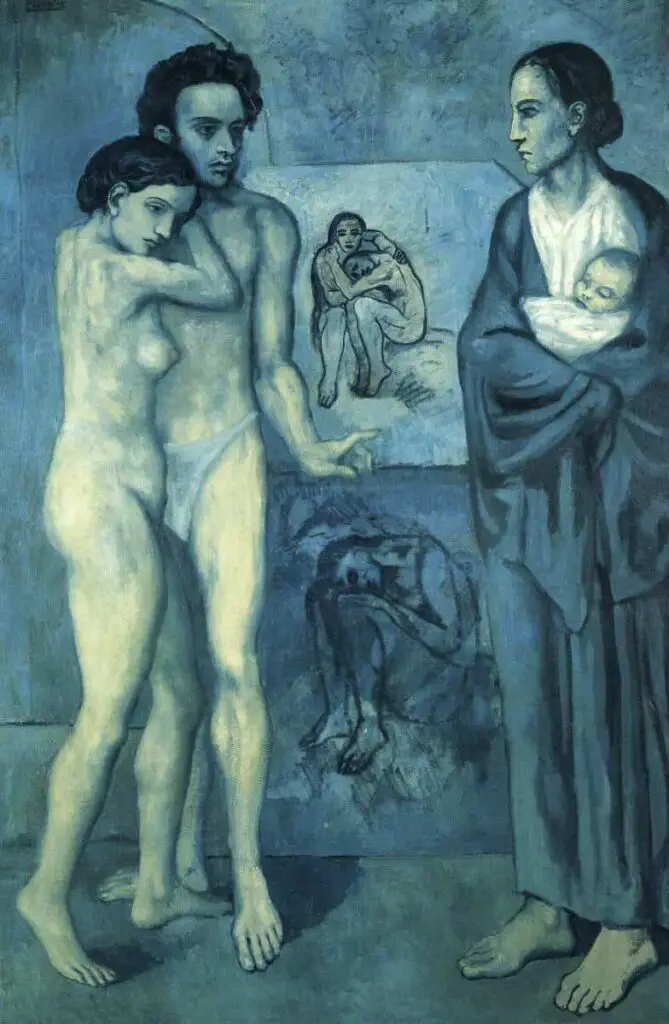
In essence, these artists’ legacy underscores a profound truth: art is a reflection of the human experience, encapsulating our struggles, triumphs, and relentless pursuit of meaning.
Through their ability to channel personal and collective narratives into their work, Michelangelo, Kahlo, da Vinci, Monet, and Picasso have crafted masterpieces and paved the way for future generations to explore the boundless possibilities of creative expression. Their contributions remind us that at the core of every brushstroke and chisel mark lies a story waiting to be told, resonating with the timeless quest for beauty and understanding in an ever-changing world.
Anita Louise Art is dedicated to art education, great artists, and inspiring others to find and create their art. We love art that uplifts and inspires. #ArtToMakeYouSmile! #ArtToMakeYouHappy!
If you are interested in seeing any of my art, you can find out more by clicking here. If you are interested in what inspires me and my paintings, you can discover more by clicking here.
We have a free newsletter and would love you to be part of our community; you can subscribe to the newsletter by clicking here. If you have any questions, I would be happy to talk to you anytime. You can reach me, Anita, by clicking here.
Subscribe to our Anita Louise Art YouTube Channel filled with great videos and information by clicking here.
Related Questions
36 Most Famous Paintings In Art History And Why They Matter
Over the years, art has been a key in almost every society and time frame. So, understanding art through the ages and some of the world’s most influential art is essential as life’s influence continues. Read on as we explore some of the world’s most influential art pieces.
By clicking here, you can learn more by reading 36 Most Famous Paintings In Art History And Why They Matter.
Art By Salvador Dali – Top 29 Paintings
Salvador Dalí’s artworks continue to fascinate and inspire, making him a timeless figure in art history. Whether you find yourself entranced by the dreamlike landscapes, the mind-bending distortions, or the profound themes, Dalí’s art remains an endless source of wonder and contemplation. Read on as we explore one of his top artworks.
By clicking here, you can learn more by reading Art By Salvador Dali – Top 29 Paintings.
A Canvas Of Words: 100 Inspiring Art Quotes From Great Minds
Art has been essential to human culture and society for thousands of years. It’s an expressive form of communication that transcends language, time, and geography barriers, allowing us to share emotions, perspectives, and visions of the world. Whether you’re an artist, an art lover, or simply someone who appreciates the power of a beautiful piece, there’s a universal language in art that speaks to us all.
By clicking here, you can learn more by reading A Canvas Of Words: 100 Inspiring Art Quotes From Great Minds.

